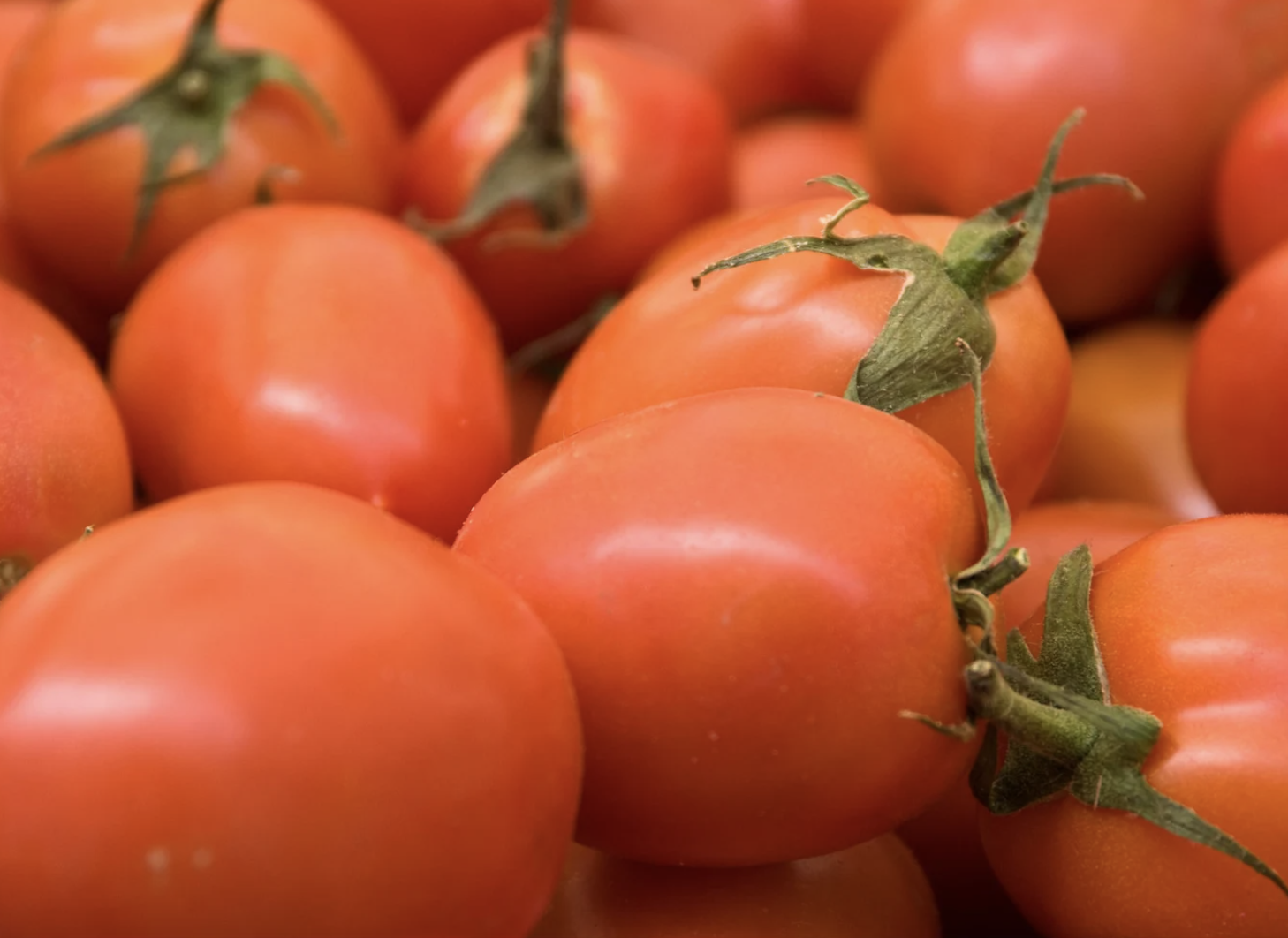Tomato, Roma

The Roma Tomato is a classic heirloom variety cherished by home gardeners and chefs alike. Known for its rich flavor and meaty texture, this determinate plant produces an abundance of plum-shaped tomatoes that are ideal for making sauces, pastes, and canning. The compact growth habit of Roma Tomatoes makes them an excellent choice for small gardens or container growing. Enjoy the satisfaction of harvesting your own tomatoes and creating homemade culinary delights with this versatile and delicious variety.
- If planting in a pot, use no smaller than a 3 gallon pot.
- Plant height 36″ – 60″
- Stake or Trellis
- Heavy feeder; needs calcium
- Companion: Basil, Thyme, Marigold
- At the end of the season, when you know there will be a frost, pick all the almost-ripe tomatoes you can, and ripen them in brown bags or spread on newspapers at room temperature. Many cultivars will store for months. Store only sound fruit, at 50-60°F. Do NOT refrigerate and try to avoid having the fruit touch each other.
- The foliage of tomatoes is toxic and should not be eaten.
| Item | Description |
|---|---|
| Zone | 3 – 10 |
| Planting Season | Spring |
| Plant Depth (in.) | . |
| Fertilizer Type | 4-6-8 |
| Light Requirements | Full Sun |
| Fragrant | n |
| Edible Parts | Fruit |
| Size | 3′ – 5′ |
| Foliage Color | Green |
| Fruit Color | Red |
| Germination | 7 to 21 |
| Maturity | 75 |
| Spacing | 2 ft |
| Determinate/Indeterminate | Determinate |
| Hybrid/Open Pollinated | Open Pollinated |
| Genus | Solanum |
| Species | esculentum |
| Subspecies | Roma |
| Common Name | Tomato, Roma |
- Start with a commercial grade seed starting mix. Make sure that it doesn’t have too high a fertilizer content. Prepare your seed by mixing the starting mix with warm water to make it arable.
- Use any container to germinate seeds as long as it excess water can drain and fill it with the moistened seed starting mix.
- Sow the seeds 1/8″ (3mm) deep. At this stage, it’s fine to plant seeds close together as seedlings will later be transplanted.
- Place germination containers out in a warm, full sun location. Extreme temps higher than 95° and lower than 50° are damaging to germination.
- Cover the germination container with plastic to trap in moisture, but be sure to check that it doesn’t dry out.
- As soon as the seedlings emerge, they will will start reaching for light.
- Once the seedlings develop their first true leaves, you can transplant the m into their own container/pot. This is an important step to help develop the root structure.
- Once they reach an adequate size and temps there is no threat of frost, transplant them to their permanent location.
- July 10, 2024 – Spouted seeds planted on July 21
- July 2024 – Pulled dead plants
- June 2024 – Month got really hot in May & June
- May 24, 2024 – Saved seeds
- May 2024 – Picked about 10 lbs of tomatoes; not enough fertilizer?
- Spring 2024 – Had a lot of blossom end rot; may not have had enough calcium
- February 2024 – Bought 6 pack Rainbow Gardens; planted in raised bed






